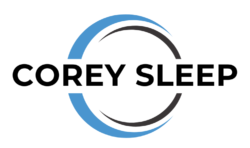Disclaimer! I’m not an expert on the Big Five, though I’ve been intaking a lot of content on it. This is some of what I’ve interpreted from the data and my own experience.
Adventures in Self-Discovery Part 3
“I usually prefer to make a rough draft first, then go back and fix it later,” I said after completing a rough version of a slide in the PowerPoint.
He stared at me, a somewhat annoying smile at the corner of his lips.
“Here, let me,” he said, taking the computer and proceeding to “perfect” my work.
I didn’t really know what to do at this point. I guess my role in the slideshow making was over. Without saying a word, he had insulted me and made me feel like an idiot.
No way but his own.
Don’t get me wrong. This guy was diligent and consistent, ordered and reliable, even quite empathetic at times. But when it came time for flexibility, bye Felicia!
But such is one trade-off for conscientiousness. Much like agreeableness can lead to codependency, conscientiousness can lead to tunnel-vision, perfectionism, workaholism and inflexibility. It can also lead to a judgemental attitude and, in extreme cases, OCD. The same trait that makes people orderly and diligent can make them narrow and stuck in their ways.
Tunnel Vision
Being disciplined is great. Focus is so essential to being efficient and, at times, to just getting the job done.
But as we know, focusing on one thing means you miss other things, perhaps intentionally. This is problematic when it comes to relating to other people and seeing their point of view. After all, you are specifically avoiding their point of view in order to diligently pursue your own goal.
Left alone, this can lead to a judgemental heart. Other people start to look incompetent, instead of just different. They do it that way… slower, messier, inefficiently, and so on.
But you know what? Sometimes, all those things are okay. The tortoise beat the hare, guys. And sometimes, perhaps often in teaching environments, people have to be allowed to do it their way, even when it’s the wrong way, since that’s how they learn and grow. (You can start to see how “conscientiousness” could make you a tiger-mom or -dad).
The lesson for the conscientious person is that their way is not the only way, nor is it always the best way. Nor is the purpose of one’s life found in efficiency or perfection.
The extremes of perfectionism
Dr. Jordan Peterson points out some interesting, albeit dire, pitfalls of conscientiousness. Let’s start with his example: Nazi Germany. Hitler was super conscientious (just look at how orderly photos of Nazi rallies were). Nazi weaponry, their tanks in particular, were much like German cars today. Well built, sturdy and efficient machines. They outmatched the Russian and American tanks no problem.
But what are the costs of constructing such great works of engineering? Well, they take more time and better resources. The energy cost is high. You also can’t build that many of them, at least not as quickly.
Turns out, more tanks beat better tanks on the plains of the world’s Second War. Go figure.
Something else worth noting. Conscientiousness involves the sub trait of orderliness, which basically means you like things in their tidy boxes. This probably contributes to the tunnel vision noted above.
Orderliness wants to keep contagions OUT; it’s associated with what some call the “behavioural immune system,” a part of us that behaves in favour of our immune system health. Unsurprisingly, conscientiousness is associated with disgust sensitivity. It all works together to keep things “clean,” at least however we might be defining cleanliness.
How did the Germans describe or propagandize the Jews?
Rats. Bacteria. Things that bring disease and infect the pure German way of life.
The same thing that made the Nazis hard-working and ordered may have also made them racist. Though let’s be clear, there was a lot of complicated things happening in Germany back then. Trait conscientiousness is not by definition racist, but it may have contributed to what happened. The same parts of us that avert us from infection may avert us from people, things, ideas, cultures that we don’t understand!
Finally, and perhaps obviously, conscientious people are more at risk for workaholism. Tunnel vision and strong drive may mean you neglect yourself, neglect others in your life, all in favour of the goal. Lots could be said here, but we’ll leave it at that since much ink has been spilled on the subject. See below for some tips!
Take the chill pill
Tempering your conscientious disposition, especially when it comes to how you relate to others, is key to avoiding these personality pitfalls. Since your personality proclivities are deeply ingrained, you can’t just flick a switch and change yourself. Nor should you. Personality is in part how you adapt to your environment, so best not try and see it as “bad.”
Instead, baby steps to deal with your problem areas (i.e. weaknesses) may prove helpful.
If you’re particularly conscientious, here are some things you can do to improve your flexibility.
1. Set intentional times where you do not have a plan.
Schedule time in your day, week or month with absolutely no plans. You just go with the flow. Loosey goosey. Whatever comes up, comes up. Maybe you’re the type to take a vacation and have a full itinerary. Why not try a couple of those days where you just do whatever and have no plans at all? Maybe try the whole vacation?
I try to do this on my Sabbath days, which I take on Saturday. Again, no plans. I let whatever comes to mind, come to mind. Sometimes I’ll give a friend a call and see if they want to hang out.
2. Allow something messy or inefficient into your life.
Depending on how conscientious you are, or rather how orderly you are, you might be a neat freak. In Jordan Peterson’s lectures on conscientiousness, he describes a client who he helped work through OCD. He suggested the man get a dog.
Dog’s are cute, but they’re also messy. Hair gets everywhere. If you have a dog like mine, slobber gets everywhere. Oh, and they stink.
That’s one major aspect of therapy. You expose yourself to the thing you’re afraid of. Think of this the same way. You’re pretty stuck in your ways, and you have trouble allowing for mess or inefficiency. So mess or inefficiency are exactly what you need!
3. Consume content from perspectives you disagree with, and try to understand where the person is coming from.
Conscientious or not, this is a difficult thing to do, especially if you’re low in trait openness. But I think this helps you flex your tolerance and flexibility muscles. It may also help you become more cooperative and empathetic.
Try to avoid, at least for a time, the temptation to “beat” the arguments in your head in a kind of intellectual dominance. Just take it in and put yourself in the other person’s shoes. You don’t have to agree; only accept the disagreement and try to respect where the author, speaker, etc. is coming from.
While I don’t struggle with the high conscientiousness pitfalls myself (since I’m not highly conscientious), I do have perfectionistic tendencies at times (fueled more by agreeableness and some neuroticism, so it’s of a different nature). My standards are high for myself. Blog posts, for example, would never get published if I had my way. One thing a therapist got me to do was make a habit of posting blogs before they were 100% ready. That was hard, but it was also a relatively low-risk way of chilling myself out. It helped my anxiety and self-acceptance.
That’s what I’m recommending here. Perfectionists, pay attention! Allow some imperfection into your life – maybe some imperfect people – and learn to swallow that chill pill whole.
This post is part of a series. Check out the following as you dig deeper into your personality.
Agreeableness: The Niceness Problem
Conscientiousness: The Perfectionism Problem
Neuroticism: How to Manage Negative Emotion
Extroversion: The Bad Side of Bright Personalities
If you liked this post, consider sharing with the buttons below or subscribe to my newsletter for future updates!





